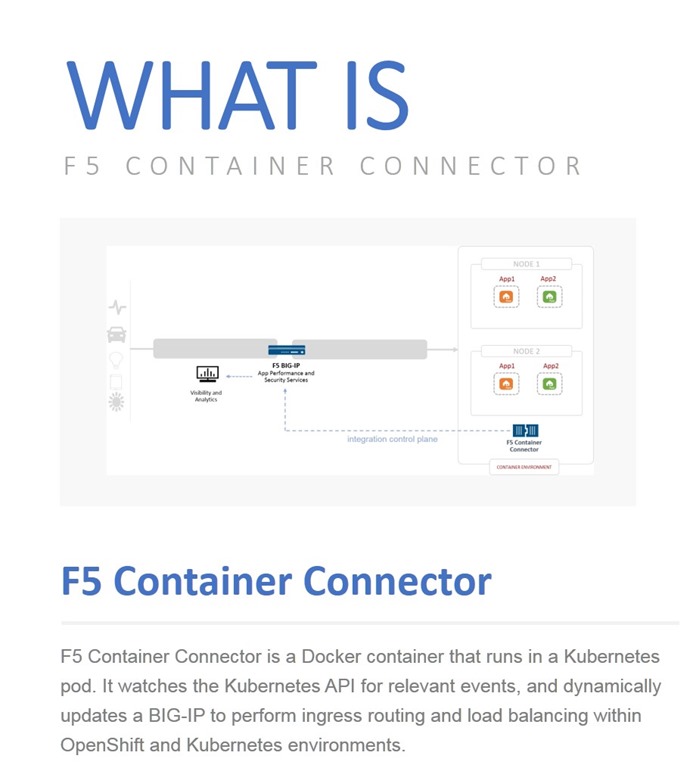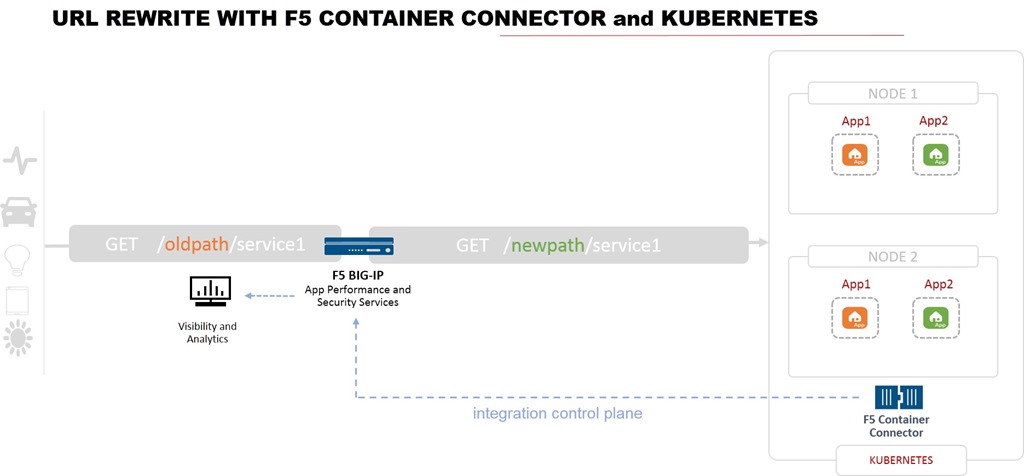オープンソーススポットライト: F5 コンテナ コネクタを使用した URL 書き換えと Helm チャート

- Helm はKubernetes のパッケージ マネージャーです。 Helm チャートは、複雑なコンテナ化されたアプリケーションを管理およびデプロイするための宣言型の方法として、ますます人気が高まっています。 F5 コンテナ コネクタ ( GithubおよびDockerHubで入手可能) は、 Helm チャートを使用したデプロイメントをサポートするようになりました。
- 書き換えアノテーションを使用して、Kubernetes Ingress リソースおよび OpenShift Ingress とルートの BIG-IP 上の URL を書き換えることができるようになりました。 この機能の使用に関するドキュメントはここにあります。
オープンソースとコンテナの組み合わせにより、常に変化する環境が実現します。 コンテナ環境という、もはや初期段階ではない技術は、オープンソースにルーツがあるおかげで、急速に成熟しつつあります。 ソフトウェア開発の商業および企業側で働く私たちは、オープンソースに依存することが多く (今日のアプリケーションの 80% はサードパーティのライブラリで構成されており、その多くはオープンソースです)、コンテナーも例外ではありません。
こうした急速な成熟に伴い、最新の環境と従来のネットワーク間のルートを橋渡しする F5 Container Connector などのソリューションが急速に進化しています。 このブリッジは、ユーザー (人間またはデバイス) が API にアクセスでき、アプリケーションがコンテナー環境に展開され始めることを保証するために必要です。
それは、インターネットが対処する必要のある課題がまだ存在し、組織の外部から内部への安全な受信パスによって最も適切に対処できるためです。 制限された IPv4 アドレスもその 1 つであり、これにより、企業が外部にアクセスできるように公開できるパブリック エンドポイントの数が制限されます。 また、たとえ IPv6 の採用によってその問題が解決されたとしても、セキュリティ上の懸念から、すべてのリクエストがデータセンターの奥深くまで許可される前に検査および審査されることを保証する手段として、エントリ ポイントが制限される可能性が高くなります。
つまり、コンテナ化された API とアプリへのゲートウェイを保護するために、従来のスケーラブルな負荷分散プロキシが今後も使用され続けることになります。 しかし、だからといって、BIG-IP などのソリューションが、リクエストを配信する環境と同じくらい柔軟かつ動的であるべきではないということではありません。 F5 コンテナ コネクタが存在するのは、コンテナ環境内の変更が BIG-IP に迅速に伝達されるようにするためです。
「F5 コンテナー コネクタの新機能」の今回のイテレーションでは、URL の書き換えを容易にする書き換えアノテーションのサポートを発表します。 このような機能は、クライアントを API またはアプリの 1 つのバージョンから別のバージョンに移行したり、古い URL パスの問題を解決できる新しいパスに自動的に書き換えて解決したりするなど、さまざまな目的で使用されます。

また、Kubernetes パッケージ マネージャーである Helm のサポートも新しく追加されました。 コンテナ環境とその中に展開されるアプリケーションは、関連するシステムの点でますます複雑になり、手動で展開および管理することが不可能になります。 拡張するだけでなく、特定のアプリケーションに対してすべての要素が適切に配置されていることを確認するために、より自動化された宣言型のデプロイメントおよび管理方法が必要です。
Helm はチャートと呼ばれるものを使用してアプリケーション全体とそのコンポーネントをパッケージ化し、一貫性のある繰り返し可能なデプロイメントと、問題が発生した場合の簡単なロールバックを保証します。 F5 コンテナ コネクタは、Helm チャートを使用して BIG-IP 上のイングレス ルートをシームレスに展開および管理できるようになりました。
rewrite アノテーションのドキュメントは こちら、 F5 BIG-IP ingress Helm チャートは github でご覧いただけます。
